Scientific Papers in SCI
2020
2020
Reactividad de Sólidos
Development by Mechanochemistry of La0.8Sr0.2Ga0.8Mg0.2O2.8 Electrolyte for SOFCs
Garcia-Garcia, FJ; Tang, YQ; Gotor, FJ; Sayagues, MJMaterials, 13 (2020)
Show abstract ▽
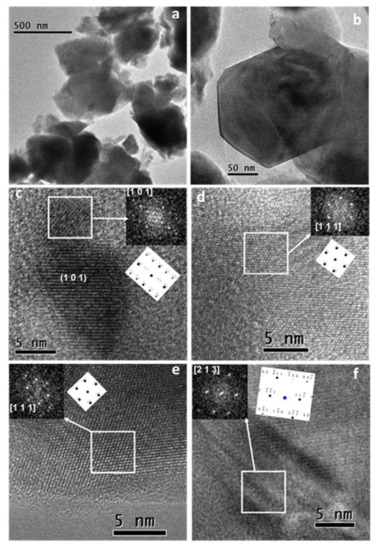
In this work, a mechanochemical process using high-energy milling conditions was employed to synthesize La0.8Sr0.2Ga0.8Mg0.2O3-δ (LSGM) powders from the corresponding stoichiometric amounts of La2O3, SrO, Ga2O3, and MgO in a short time. After 60 min of milling, the desired final product was obtained without the need for any subsequent annealing treatment. A half solid oxide fuel cell (SOFC) was then developed using LSGM as an electrolyte and La0.8Sr0.2MnO3 (LSM) as an electrode, both obtained by mechanochemistry. The characterization by X-ray diffraction of as-prepared powders showed that LSGM and LSM present a perovskite structure and pseudo-cubic symmetry. The thermal and chemical stability between the electrolyte (LSGM) and the electrode (LSM) were analyzed by dynamic X-ray diffraction as a function of temperature. The electrolyte (LSGM) is thermally stable up to 800 and from 900 °C, where the secondary phases of LaSrGa3O7 and LaSrGaO4 appear. The best sintering temperature for the electrolyte is 1400 °C, since at this temperature, LaSrGaO4 disappears and the percentage of LaSrGa3O7 is minimized. The electrolyte is chemically compatible with the electrode up to 800 °C. The powder sample of the electrolyte (LSGM) at 1400 °C observed by HRTEM indicates that the cubic symmetry Pm-3m is preserved. The SOFC was constructed using the brush-painting technique; the electrode–electrolyte interface characterized by SEM presented good adhesion at 800 °C. The electrical properties of the electrolyte and the half-cell were analyzed by complex impedance spectroscopy. It was found that LSGM is a good candidate to be used as an electrolyte in SOFC, with an Ea value of 0.9 eV, and the LSM sample is a good candidate to be used as cathode
March, 2020 | DOI: 10.3390/ma13061366
Nanotecnología en Superficies y Plasma
Platinum nanoparticles stabilized by N-heterocyclic thiones. Synthesis and catalytic activity in mono- and di-hydroboration of alkynes
Moraes, LCC; Figueiredo, RCC; Espinos, JPP; Vattier, F; Franconetti, A; Jaime, C; Lacroix, B; Rojo, J; Lara, P; Conejero, SNanoscale, 12 (2020) 6821-6831
Show abstract ▽
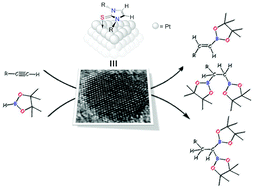
N-Heterocyclic Thiones (NHT) proved to be efficient ligands for the stabilization of small platinum nanoparticles (1.3-1.7 nm), synthesized by decomposition of [Pt(dba)(2)], under a H-2 atmosphere, in the presence of variable sub-stoichiometric amounts of the NHT. Full characterization by means of TEM, HR-TEM, NMR, ICP, TGA and XPS have been carried out, providing information about the nature of the metal nanoparticles and the interaction of the NHT ligands to the metal surface. Importantly, DFT calculations indicate that some NHT ligands interact with the metal through the C & xe001;C double bond of the imidazole fragment in addition to the sulfur atom, thus providing additional stabilization to the nanoparticles. According to XPS, TGA and ICP techniques, the surface coverage by the ligand increases by decreasing the size of the substituents on the nitrogen atom. The platinum nanoparticles have been used as catalyst in the hydroboration of alkynes. The most active system is that with a less covered surface area lacking an interaction of the ligand by means of the C & xe001;C double bond. This catalyst hydroborates alkynes with excellent selectivities towards the monoborylated anti-Markovnikov product (vinyl-boronate) when one equiv. of borane is used. Very interestingly, aliphatic alkynes undergo a second hydroborylation process leading to the corresponding 1,1- and 1,2-diboroylated species with good selectivities towards the former.
March, 2020 | DOI: 10.1039/d0nr00251h
Nanotecnología en Superficies y Plasma
Optofluidic liquid sensing on electromicrofluidic devices
Oliva-Ramirez, M; Wang, SL; Rico-Gavira, V; Lopez-Santos, C; Fan, SK; Gonzalez-Elipe, ARMaterials Research Express, 7 (2020) 036407
Show abstract ▽
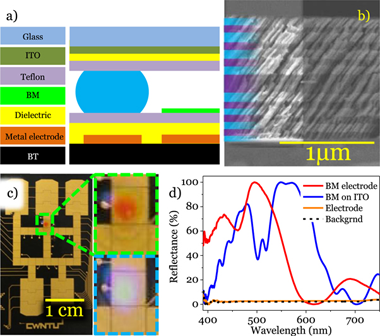
Electromicrofluidic (EMF) devices are used to handle and move tiny amounts of liquids by electrical actuation, including electrowetting-on-dielectric (EWOD) and dielectrophoresis (DEP). Monitoring the liquid characteristics in one of these devices requires suitable sensing transducers incorporated within the microfluidic structure. In the present work, we describe the incorporation of an optofluidic photonic transducer in an EMF device to monitor the refractive index of a liquid during its manipulation. The incorporated transducer consists of a responsive porous Bragg Microcavity (BM) deposited via physical vapor oblique angle deposition. Besides reporting the manufacturing procedure of the sensing-EMF device combining liquid handling and monitoring, the performance of the BM is verified by infiltrating several liquids dripped on its surface and comparing the responses with those of liquid droplets electrically moved from the delivery part of the chip to the BM location. This study proved that modified EMF devices can incorporate photonic structures to analyze very low liquid volumes (similar to 0.2 mu L) during its handling.
March, 2020 | DOI: 10.1088/2053-1591/ab7fdf
Fotocatálisis Heterogénea: Aplicaciones
Pt–TiO2–Nb2O5 heterojunction as effective photocatalyst for the degradation of diclofenac and ketoprofen
Sacco, O.l; Murcia, J.J.; Lara, A.E.; Hernández-Laverde, M.; Rojas, H.; Navío, J.A.; Hidalgo, M.C.; Vaiano, V.Materials Science in Semiconductor Processing, 107 (2020) 104839
Show abstract ▽
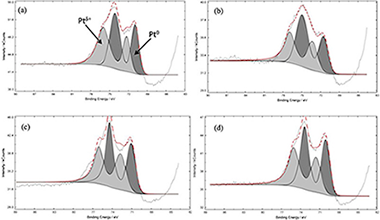
Pt–TiO2–Nb2O5 heterojunction was synthetized and studied for the photocatalytic removal of diclofenac (DCF) and ketoprofen (KTF) under UV light irradiation. The physical-chemical properties of the prepared catalysts were analysed by different characterization techniques revealing that the lowest platinum nanoparticle size and the better metal distribution was observed in Pt–TiO2–Nb2O5 sample. The Pt–TiO2–Nb2O5 heterojunction possessed the best photocatalytic activity toward both the photodegradation and mineralization of the two selected pollutants. The optimal photocatalyst showed a DCF and KTF mineralization rate of 0.0555 and 0.0746 min−1, respectively, which were higher than those of Pt–TiO2 (0.0321 min−1 for DCF and 0.0597 min−1 for KTF). The experiments driven to analyse the effects of free radical capture showed that ·OH, ·O2− and h+ have a primary role in reactive during the photocatalytic reaction. The improved photocatalytic performances of the Pt–TiO2–Nb2O5 heterojunction could be argue by a direct Z-scheme mechanism in which the Pt0 nanoparticles could act as a bridge between TiO2 and Nb2O5, improving the electron-hole separation and, ultimately, enhancing the photocatalytic removal rate of both DCF and KTF.
March, 2020 | DOI: 10.1016/j.mssp.2019.104839
Materiales Ópticos Multifuncionales
Optical Responses of Localized and Extended Modes in a Mesoporous Layer on Plasmonic Array to Isopropanol Vapor
Murai, S; Cabello-Olmo, E; Kamakura, R; Calvo, ME; Lozano, G; Atsumi, T; Miguez, H; Tanaka, KJournal of Physical Chemistry C, 124 (2020) 5772-5779
Show abstract ▽
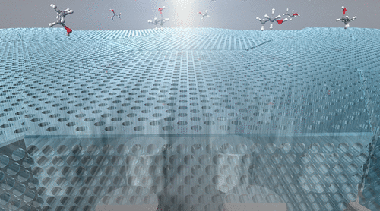
Mesoporous silica features open and accessible pores that can intake substances from the outside. The combination of mesoporous silica with plasmonic nanostructures represents an interesting platform for an optical sensor based on the dependence of plasmonic modes on the refractive index of the medium in which metallic nanoparticles are embedded. However, so far only a limited number of plasmonic nanostructures are combined with mesoporous silica, including random dispersion of metallic nanoparticles and flat metallic thin films. In this study, we make a mesoporous silica layer on an aluminum nanocylinder array. Such plasmonic arrangements support both localized surface plasmon resonances (LSPRs) and extended modes which are the result of the hybridization of LSPRs and photonic modes extending into the mesoporous layer. We investigate in situ optical reflectance of this system under controlled pressure of isopropanol vapor. Upon exposure, the capillary condensation in the mesopores results in a gradual spectral shift of the reflectance. Our analysis demonstrates that such shifts depend largely on the nature of the modes; that is, the extended modes show larger shifts compared to localized ones. Our materials represent a useful platform for the field of environmental sensing.
March, 2020 | DOI: 10.1021/acs.jpcc.9b10999
- ‹ previous
- 104 of 410
- next ›














